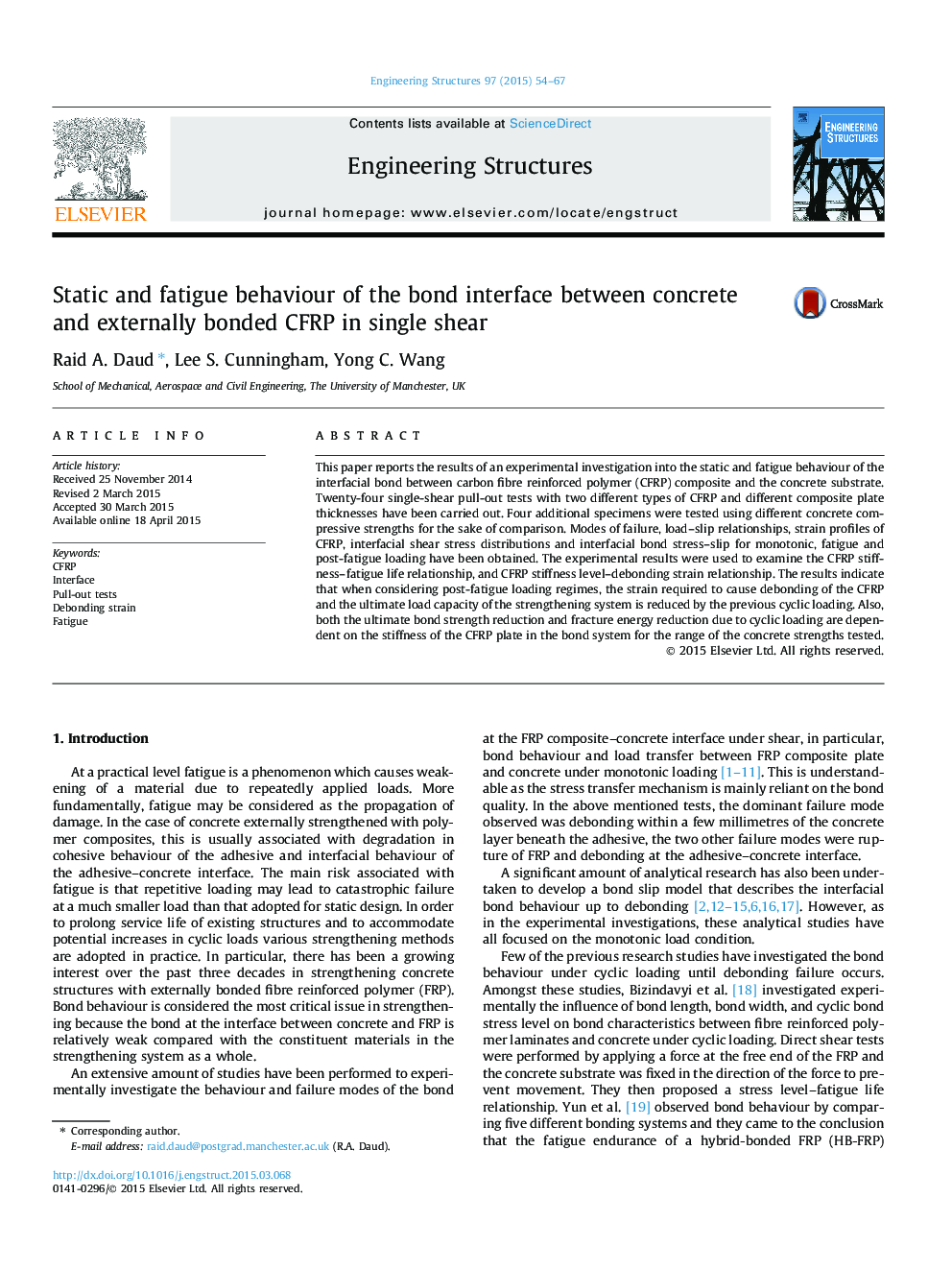| Article ID | Journal | Published Year | Pages | File Type |
|---|---|---|---|---|
| 266337 | Engineering Structures | 2015 | 14 Pages |
•Reductions in ultimate load and debonding strain of the bonding system due to fatigue.•Reductions in bond strength and fracture energy reduction depends on CFRP stiffness.•Fatigue life under same CFRP stiffness affected by load amplitude range.
This paper reports the results of an experimental investigation into the static and fatigue behaviour of the interfacial bond between carbon fibre reinforced polymer (CFRP) composite and the concrete substrate. Twenty-four single-shear pull-out tests with two different types of CFRP and different composite plate thicknesses have been carried out. Four additional specimens were tested using different concrete compressive strengths for the sake of comparison. Modes of failure, load–slip relationships, strain profiles of CFRP, interfacial shear stress distributions and interfacial bond stress–slip for monotonic, fatigue and post-fatigue loading have been obtained. The experimental results were used to examine the CFRP stiffness–fatigue life relationship, and CFRP stiffness level–debonding strain relationship. The results indicate that when considering post-fatigue loading regimes, the strain required to cause debonding of the CFRP and the ultimate load capacity of the strengthening system is reduced by the previous cyclic loading. Also, both the ultimate bond strength reduction and fracture energy reduction due to cyclic loading are dependent on the stiffness of the CFRP plate in the bond system for the range of the concrete strengths tested.
